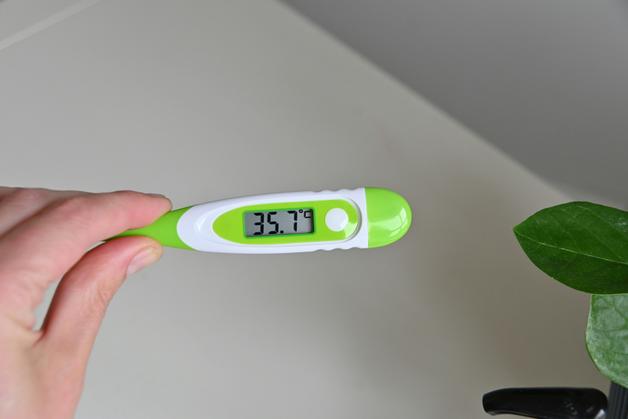When an infant suddenly flings their arms wide and lets out a sharp cry—a scene both startling and perplexing—it can leave even the most composed parent searching for reassurance. What causes this surge of movement, so spontaneous and intense? Welcome to the intricate world of the Moro reflex, a window onto your baby’s evolving nervous system, and a source of both concern and curiosity for many families. Are these dramatic outbursts normal? Should you be worried if your baby startles more (or less) than others? How long will this phase last, and is there anything to smooth the process? These are questions shared across sofas and clinics alike, particularly in the haze of early parenthood. With an empathetic lens and rigorous scientific detail, unravel the mysteries of the Moro reflex while spotlighting the neurological, sensory, and developmental processes quietly at work beneath these flailing little arms. From medical explanations to actionable home strategies, every answer aims to bring you one step closer to calm confidence.
What Is the Moro Reflex? Anatomy of a Newborn Startle
Let’s pause for a moment. Imagine the flutter of a startled bird; now, picture the swift, reflexive jerking of a newborn’s limbs in response to an unexpected sensation. This is the Moro reflex—sometimes called the “startle reflex.” What’s going on inside your baby’s body to create such a vivid display? When a loud sound or a shift in position reaches a newborn, a sophisticated interplay begins within the brainstem and spinal cord. The baby’s arms and sometimes legs shoot out (a movement known as “abduction”), fingers splay, and within seconds, the limbs retract inward (“adduction”)—often ending with a robust wail. This entire process is involuntary, a beautifully orchestrated yet “primitive reflex,” meaning it’s prewired by evolution and present from birth.
Such reflexes, inherited from our earliest ancestors, serve to protect the infant. Medical practitioners observe the symmetry and responsiveness of the Moro reflex right from the newborn assessment. Why? Its emergence at birth reassures doctors and families alike of intact sensory pathways and functioning central nervous system—particularly the integration between the brainstem, motor neurons, and emerging sensory processing.
The Functional Significance of the Moro Reflex: More Than Just a Startle
At first glance, the Moro reflex may seem little more than an unexpected jolt. But beneath its dramatic surface are layers of physiological importance, each tightly linked to baby’s survival and developmental roadmap. Essentially, it offers an early “alarm system,” preparing the infant for escape from sudden threat—a legacy of evolution where even the youngest needed to react rapidly to environmental danger.
But the Moro reflex does more than startle. Neural development is at stake here. The simultaneous extension and contraction of the limbs facilitate coordination between opposing muscle groups, giving rise to future voluntary movement. It lays the groundwork for motor milestones—from purposeful grasping to rolling, and eventually, crawling. Importantly, this process of quick adaptation is also an indicator of neurological maturity, signposting the brain’s communication with the body in real time.
Developmental Milestones: Emergence, Peak, and Disappearance
When does the story of the Moro reflex truly begin? The answer lies deep within prenatal development. This response appears as early as the 25th week of gestation, becoming fully demonstrable by week 30. For preterm infants, however, the reflex often manifests as weaker or incomplete, reflecting immaturity of both muscle tone and neural connections. Over the first several weeks of life, the Moro reflex remains robust—often peaking during the newborn’s first three months.
Here, pattern and timing matter. As head and neck control strengthens—usually by four months—its intensity wanes, giving way to voluntary, purposeful movements. Most infants integrate the Moro reflex between the fourth and sixth month. A lingering reflex after this window, or a particularly weak or asymmetric one, can ring alarm bells about possible neurological or developmental conditions.
What Triggers the Moro Reflex? The Everyday and the Unexpected
Ever wonder why the Moro reflex might disrupt a peaceful nap, or startle your baby during a quiet feed? Triggers are often mundane, yet to the newborn, intensely sensory:
- Acoustic stimuli: A sudden bark, a door slamming, voices rising without warning.
- Mechanical events: A shift of arms during dressing or being set down with a hint too much haste.
- Perception of free fall: Even a slight drop of the head (such as during a diaper change) can activate this primitive circuit.
These triggers, while nearly unavoidable, rarely cause harm—though they can challenge the everyday calm of both parent and child. Swaddling blankets, soft lighting, and mindful movements become practical allies.
Clinical Observation: How Healthcare Workers Assess the Moro Reflex
Medical professionals pay careful attention to the Moro reflex during routine exams. Using safe, gentle maneuvers—often letting the infant’s head drop back slightly while supported—they observe several facets:
- Are the arms extending outward before curling in?
- Is the response symmetrical, or does one side lag?
- How intense is the reaction?
Observation doesn’t end at the hospital. Parents too witness this choreography in daily life. If episodes become excessive, or if only half the body responds, a deeper evaluation may be needed. Here, vigilance does not equal anxiety; instead, it empowers early intervention.
Significance, Abnormalities, and Associated Conditions
A strong, bilateral Moro reflex offers comfort, representing reliable central nervous system integrity. But variations—absent, weak, exaggerated, or asymmetrical responses—suggest a need for closer scrutiny. Potential underpinnings include:
- Birth trauma involving nerves (e.g. brachial plexus injuries) or fractured bones
- Perinatal hypoxia—a medical term for oxygen deprivation during birth
- In utero exposure to specific medications or toxins
- Prematurity, leading to delayed or protracted appearances of the reflex
- Neurodevelopmental disorders such as cerebral palsy or rare conditions like hyperekplexia
On occasion, a potent and persistent reflex, particularly if accompanied by other atypical developmental signs, hints at deeper neurophysiological differences. Timely recognition is a gateway to support—not a label of limitation.
Distinguishing the Moro Reflex From Other Neonatal Reflexes
Primitive? Yes, but not alone. The Moro reflex is just one actor in a cast of newborn reflexes, each with its own timeline and function. Consider these colleagues:
- Sucking and swallowing reflexes: Vital for feeding efficiency and safety.
- Palmar grasp reflex: The irresistible curl of tiny fingers around your thumb.
- Stepping reflex: Early, ghost-like walking motions when feet touch a surface.
- Tonic neck reflex: That characteristic “fencer’s pose” when the head turns.
- Babinski reflex: Toes fan out when the underside of the foot is stroked.
Each fades as the neurological system matures and voluntary control supplants involuntary patterns. Tracking the integration windows of these reflexes adds context and reassurance to the developmental journey.
Why Do Some Babies Show Abnormal Moro Reflexes? Exploring Medical Explanations
What if the Moro reflex appears absent, uneven, unusually persistent, or is accompanied by sluggish overall development? Reasoned analysis of the potential underlying causes can illuminate the appropriate path forward:
- Prematurity: Immature muscles and nervous system result in delayed, weak, or prolonged reflexes.
- Birth-related injuries: Disruption to nerves, like the brachial plexus, can mute or unbalance the reflex.
- Oxygen deprivation (hypoxaemia) during labor.
- Maternal substance exposure: Certain medications and environmental toxins cross the placenta, potentially affecting neurodevelopment.
- Genetic conditions: Syndromes like hyperekplexia (startle disease) or broader developmental disorders.
Persistent or abnormal Moro reflexes have correlations with sensory processing challenges, delayed milestones, and difficulties in behavioral regulation. Unintegrated reflexes—meaning those which linger far beyond the expected timeframe—may be linked to learning or emotional difficulties later on. Clinical monitoring and, where appropriate, therapy can turn uncertainty into empowerment.
Supporting Moro Reflex Integration: Practical Solutions for Home
What does parental support look like during this period? The key is fostering safety and gentle transitions from reflex-driven to purposeful movement. Strategies include:
- Gentle, well-timed head and neck support whenever lifting or lowering.
- Thoughtful, snug swaddling (using light, breathable fabric) during sleep, which can limit excessive startle episodes.
- Easing exposure to loud noises and abrupt stimulation, especially near sleep or feeding time.
- Daily tummy time, promoting the development of neck, back, and arm muscles, which in turn accelerates voluntary movement.
- Sensory enrichment—bring in varied soft textures, subtle sounds, warm visual cues—while keeping stimulation appropriate for your baby’s age and temperament.
Atypical patterns, whether excessive or weak, shouldn’t automatically stoke alarm, but they should prompt timely dialogue with your pediatrician or a developmental specialist. Early recognition, informed observation, and family education remain the strongest allies in nurturing both comfort and robust development.
Global Development: Beyond the Reflex
Successful integration of the Moro reflex isn’t just about “outgrowing” startling; it’s a foundational leap toward voluntary movement, improved sensory processing, and emotional regulation. Without this integration, consequences can subtly echo through childhood—noticeable in clumsiness, impaired coordination, heightened reactivity to stimuli, or difficulties with focus and self-control.
Transitioning from involuntary, reflexive actions to purposeful, controlled movement enables children to adapt, learn, and interact seamlessly with their world. This transformation doesn’t just mark a milestone in physical growth—it is a powerful symbol of ongoing cognitive and emotional maturation.
Key Takeaways
- The Moro reflex is a normal, expected part of early infancy, providing critical signals about developing nervous and sensory systems.
- Presence, symmetry, and gradual disappearance of this reflex (usually by six months) heralds thriving brain-body communication.
- Abnormalities—persistent, absent, exaggerated, or asymmetric responses—point to the need for a professional assessment, but are not a cause for panic.
- Practical steps at home, such as careful handling, sensory-sensitive routines, and tummy time, make a meaningful difference.
- Parents can find scientific guidance, personalized questionnaires, and supportive advice tailored to their children’s needs by downloading the Heloa app.
- Engaged, informed observation, underpinned by open communication with healthcare professionals, fosters both peace of mind and the best possible start for your child’s journey forward.
Questions Parents Ask
Can the Moro reflex affect my baby’s sleep?
It’s common for the Moro reflex to sometimes disrupt your baby’s sleep, especially during lighter sleep cycles. You might notice sudden jerky movements or even brief awakenings. This is a natural stage of development and tends to diminish as your baby’s nervous system matures—usually by the age of 4 to 6 months. Meanwhile, gentle swaddling (making sure baby’s hips are free to move) and creating a calm sleep environment can help limit disturbances and offer a sense of security.
Does every baby have the Moro reflex?
Yes, the vast majority of newborns display the Moro reflex at birth—it’s a naturally programmed response. However, for some premature infants or those with certain birth experiences, the reflex may be less pronounced, appear later, or even be asymmetric. In rare cases where the Moro reflex is absent, exaggerated, or different on one side, it is helpful to mention these observations during pediatric check-ups. Rassurez-vous, your healthcare team is there to explore these questions with you and guide you if anything seems unusual.
Is it possible for older children or adults to have the Moro reflex?
The Moro reflex is specific to infants and is expected to fade naturally by about 4 to 6 months of age. If a startle reflex resembling the Moro reflex is noticed in older children or adults, il est important d’en parler avec un professionnel de santé, car cela peut signaler des particularités neurologiques. However, situations like sudden loud noises can make anyone jump—this is a normal, protective reaction and not the infantile Moro reflex itself.
Further reading:









